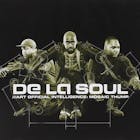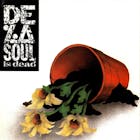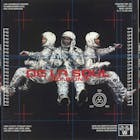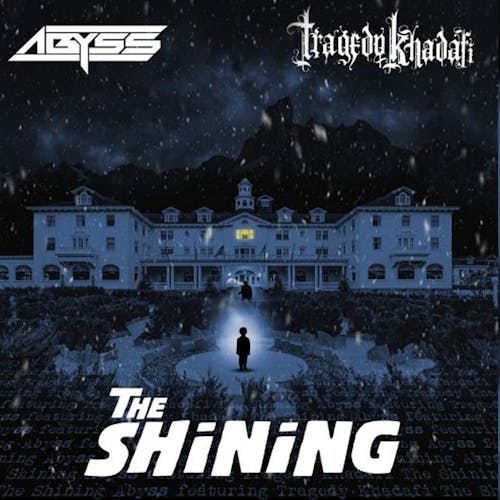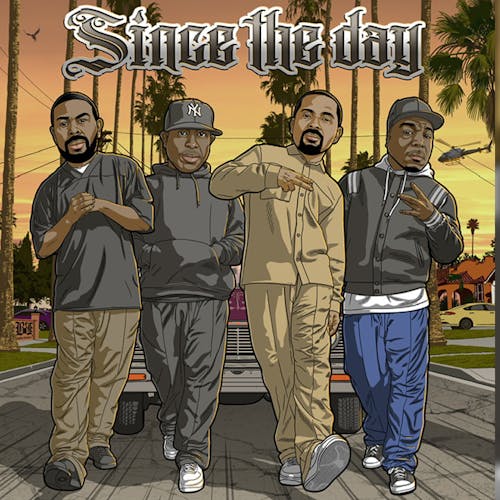
Classic Albums: '3 Feet High & Rising' by De La Soul
Classic Albums: '3 Feet High & Rising' by De La Soul
Published Wed, April 6, 2022 at 12:00 AM EDT
"We've been different ever since we were in school. We didn't dress like anyone else and we had our own language so nobody would know what we were talking about, so it was natural that we'd do different things with our music, too."
That was Dave Jolicoeur of De La Soul back when he was still known as Trugoy the Dove in 1989. His declaration of difference was a proclamation about the aesthetic and ethos of his group. De La debuted in the late 1980s with a sound and an approach that was unlike anything else in rap music. The late 1980s saw mainstream Hip-Hop diversifying rapidly as a genre: Public Enemy's fiery political rap exploded onto popular culture via their second album It Takes A Nation Of Millions To Hold Us Back; N.W.A. terrified moralists with the controversial gangsta rap of Straight Outta Compton; DJ Jazzy Jeff & The Fresh Prince took home rap's first Grammy for "Parents Just Don't Understand" from their second album, a chart-topping collection of polished pop rap called He's The DJ, I'm the Rapper.
And De La Soul suddenly put artsy weirdness at the forefront of the rap game.
Dave, Kelvin "Posdnous" Mercer and Vincent "P.A. Pacemaster Mase aka Maseo" Mason were high school friends from Amityville, New York when they came together to form one of Hip-Hop's most groundbreaking and influential trios. And from the very beginning, De La Soul was daring to be different. Dave called himself "Trugoy," a backwards-spelled reference to yogurt, his favorite food; "Posdnous" was an anagram of "Sound Sop," an early name Mercer took as a DJ.
Yep—even these guys' NAMES were weird.
These three friends from Long Island, and their admittedly idiosyncratic tastes, found the perfect foil in former Stetsasonic member Prince Paul. Born Paul Huston, and also from Amityville, N.Y.; the producer had an affinity for a wide array of styles and sounds in music. He also had an undoubtedly nerdy sensibility and seemed to be in perfect sync with Pos, Maseo and Trugoy from the very beginning. In high school, Posdnous had rapped over everything from Steve Miller Band to the Eurythmics, and the group was enamored with Paul because he was a local celebrity who'd found success with Stetsasonic. And he was weird enough to understand their off-kilter ideas. The group would bring their favorite records to the studio, and look for unusual ways to flip them. The resulting experimentation became 3 Feet High & Rising and it showcased their myriad of musical influences. Critics would point out their debt to outside-the-box predecessors like George Clinton and Frank Zappa.
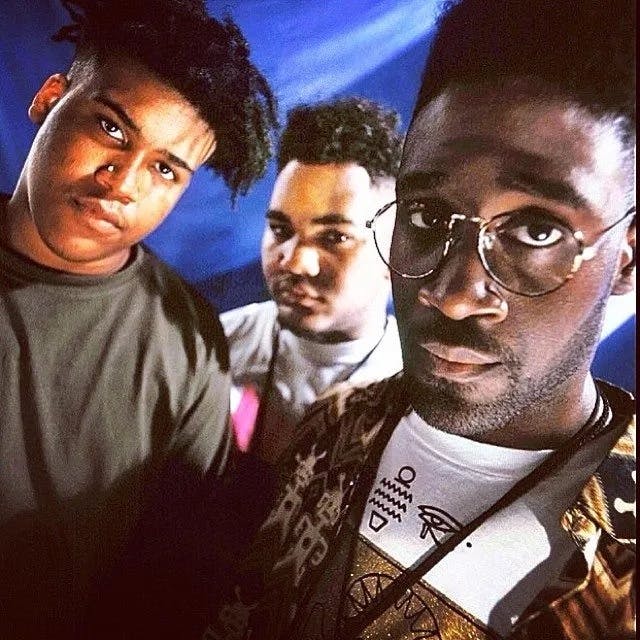
"Clinton's a definite," said Posdnuos in an interview with the Washington Post at the time. "I didn't know much about Frank Zappa; I'd heard about him but I wasn't exactly brought up on his music ..."
Throughout 3 Feet High..., you'll find musical references to the Turtles, Hall & Oates and Steely Dan. This was Hip-Hop that wasn't overly preoccupied with the trendy James Brown flips that were prevalent at the time; and their first official release, the groundbreaking "Plug Tunin'" made it clear that these guys weren't going to do things the way that anyone was accustomed to. It was the original version of the song that initially made Paul take interest in the group. He'd heard their demo, and they worked collectively on an official remix for the song. At that stage my role wasn't to make them more commercial, just a little bit more understandable," explained Paul to Steve Daly.
Taking a bari-sax flip and some backing vocals from The Invitations 60s R&B track "Written On the Wall" and turns it into a goofy masterpiece. Pos and Trugoy reference Public Enemy, announce themselves as "Plug One" and "Plug Two," respectively; and make it clear that the D.A.I.S.Y. Age has dawned.
DROP YOUR EMAIL
TO STAY IN THE KNOW
It stands for "Da Inna Sound, Y'all..."
“Potholes In My Lawn" was officially the second single to be released from 3 Feet High and Rising, but it was the first De La Soul music video and it landed the group on then-new music video shows like Rap City and Yo! MTV Raps. Melding Mountain with Parliament Funkadelic, De La delivers one of Hip-Hop's best, and oddest, critiques of biters. Trugoy and Pos bemoan the fact that suckas are copping the words from their rhyme sheets, and the potholes metaphor would become something of an early symbol for the group. There was something decidedly whimsical about it, and Hip-Hop in the late 1980s was not known for whimsy.
"We coined the term 'The D.A.I.S.Y. Age' after we noticed a nightgown in a store that had a picture of Minnie Mouse holding a daisy on it," Pos explained in 2014. "Although 'D.A.I.S.Y.' stood for 'Da Inna Sound Y’all,' it was also about suggesting a sunnier style of rap – during downtime, we’d do skits, silly stuff over music. When we finished the album, Prince Paul said that it needed something to glue all the tracks together, so we got on the mic and gave the album it's rolling game show skit."
That "sunnier" approach seemed to be a part of the collective mindset for a small crew of artists who were starting to emerge out of New York City. The first to make any real waves was a Brooklyn duo called The Jungle Brothers, who'd broken through with their debut album Straight Out the Jungle in 1988. That album featured a somewhat boho sensibility married to Afrocentric themes and a positive outlook; and the J.B.'s had been high school friends with an up-and-coming group out of Queens who called themselves A Tribe Called Quest. Led by friends Q-Tip and Ali Shaheed Muhammad, that group was similar to the J.B.s in aesthetic. When the Jungle Brothers and De La Soul met at a Boston show, they clicked immediately.
No one knew it at the time; but the chance meeting of the Jungle Brothers and De La Soul would kickstart a wave in Hip-Hop that would reverberate for decades.
“We had a natural love for the art and a natural love for each other on how we put stuff together," Dave explained years later. "So we invited [the Jungle Brothers] to a session, and when they hooked up with us, we happened to be doing 'Buddy.' It wasn’t business; it wasn’t for a check. It was just trading ideas and just seeing what you’re doing. Bottom line, it was just having fun.”
Soon, Tribe (which now included best friends Phife Dawg and Jarobi) would come into the fold, as did a teenager from New Jersey named Queen Latifah; and a rapper out of the U.K. who called herself Monie Love. Q-Tip gave the collective it's name after hearing the song "African Cry" by New Birth: The Native Tongues.
The subsequent commercial success of 3 Feet High & Rising gave the Native Tongues an anchor that announced the crew to the mainstream. And De La Soul's hit single "Buddy" gave them an official anthem. The playful tune, a tongue-in-cheek ode to sex, features De La, the JBs, Tribe and Monie Love in a fun free-for-all. The Native Tongues were not the fiery rhetoric of Public Enemy nor were they the angry nihilism of N.W.A. The Native Tongues came from a slightly different perspective; freewheeling Afrocentricism and an eclectic sensibility that Hip-Hop hadn't seen before.
"Most rappers fit in with the same style which everyone else is doing and which audiences have accepted," Posdnuos told Melody Maker back in '89. "But a lot of them have therefore become trapped in their own image, because once you start along a certain route it's hard to get off of it. A lot of rappers that I know are witty and funny, good guys, but once the lights come on they feel that they have to conform to 'cool.' We don't – what you hear on the album is how we are in real life. The craziness is a part of our actual personalities."

Although 'D.A.I.S.Y.' stood for 'Da Inna Sound Y’all,' it was also about suggesting a sunnier style of rap..."
- Posdnous of De La Soul, (2014 Guardian interview)
In terms of sequencing and flow, 3 Feet High & Rising is a masterclass in album making. It remains one of Hip-Hop's all-time best concept albums, tied together by a comical game show theme and the group's own quirkiness. Paul is the guiding force behind so much, and his gift for outside-the-box production keeps things rolling. Whether De La Soul is rapping about teenage sexcapades on "Jenifa Taught Me," or anthropomorphic fish on "Tread Water;" or if the group is chastising people for their bad hygiene on "A Little Bit of Soap" or going unexpectedly topical on "Ghetto Thang," Paul seems to be the conductor who is up for anything.
"It opened so many doors in terms of our thinking about how to do things in the studio," Pos told the Washington Post of Prince Paul's influence. "Sampling wasn't really into our heads that much then because we didn't have the equipment to do it. At home we did these dusty old demo tapes using one little Casio sampler that could only fit in two samples at a time. Once we got in the studio, we found that we could work the equipment in, and it just brought forth more ideas."
Critics fell over themselves for 3 Feet High & Rising. White rock enthusiasts who'd found Hip-Hop impenetrable were suddenly raving about this artsy rap group out of Amityville. And magazines were calling Prince Paul a genius. But the man never believed the hype.

"We won't jump on our own bandwagon," he said in 1989. "So no Steely Dan, game shows or George Clinton just because 'Me, Myself and I' hit; we'll do what we like. People say De La Soul was a very big group in terms of influence and changing the sound of rap but it's not like we tried to change everything, it's just that the people who are really successful are those who do what they like and do it the best."
The controversy surrounding sampling was swirling around 3 Feet High... and its success. The album took snippets from seemingly everywhere, and "Transmitting Live From Mars" eventually became the subject of a lawsuit from The Turtles over an unlicensed use of a 12-second sample from their 1969 hit "You Showed Me." Sampling as an artform has remained a hot-button debate in music, but anyone with open ears (and no ax to grind) can listen to the album and hear innovation. This was definitely art and De La Soul was undeniably creative.
"We made the whole of 3 FEET HIGH AND RISING for $13,000," Pos explained. "Using just a Casio RZ-1 drum machine/sampler and another gadget called an Eventide harmonizer, which allowed us to match songs that had totally different pitches – we could put Daryl Hall’s voice over a Sly and the Family Stone record. It was amazing."
Of course, the song that pushed 3 Feet High & Rising into the stratosphere was the album's fifth single. Over (predominantly) a sample of "(Not Just) Knee Deep" by Funkadelic, the group extolls the virtue of individuality, declaring their unique approach and aesthetic to be a badge of honor. The music video was a major hit on MTV, featuring Pos, Trugoy and Maseo in a "Hip-Hop 101" class where they are routinely mocked for not looking the part of rappers. It was a clever way to acknowledge that the genre, by 1989, was threatening to paint itself into a corner.
The term "alternative rap" isn't a popular one, and many of the acts that have come to be associated with the subgenre reject it as a classification. But it's important to note that De La Soul wore its "otherness" on its sleeve from the very beginning, and in doing so, they helped forge a path for a kind of Black eclecticism that would become popular in the 1990s and beyond. In the same way that, say, R.E.M. made a lane for alternative rock bands to thrive at the height of hard rock and hair metal; De La Soul's success made it possible for left-leaning Hip-Hop to thrive in an era of gangsta-dom, political messaging and pop rap. The neo soul movement, the popularity of groups like Arrested Development and Digable Planets, the emergence of the Soulquarians collective and "alternative rap"—it all owes a debt to "Me, Myself and I."
The D.A.I.S.Y. Age ethos of 3 Feet... would famously become an albatross around De La Soul's collective necks and they sought to tear down their early image on their very next album. But at the time, there was something groundbreaking about 3 Feet High & Rising that stretched even beyond the music. It felt like a new awakening; and De La was at the forefront. The cover of the album famously featured the three group members stoically presented in black-and-white against a contrastingly colorful backdrop complete with flowers. The group hated it; but it cemented their early image.
"We were paid a one-off fee, $2,000 I think," said sleeve designer Toby Mott in a 2011 interview with The Guardian. "Eight months later, De La Soul exploded. They were played on college radio, which was basically white radio. That meant mass market and millions of records. They became a global hit, which was new territory for hip-hop. After De La Soul, it became the dominant culture. The word seminal gets bandied around, but De La Soul were exactly that."
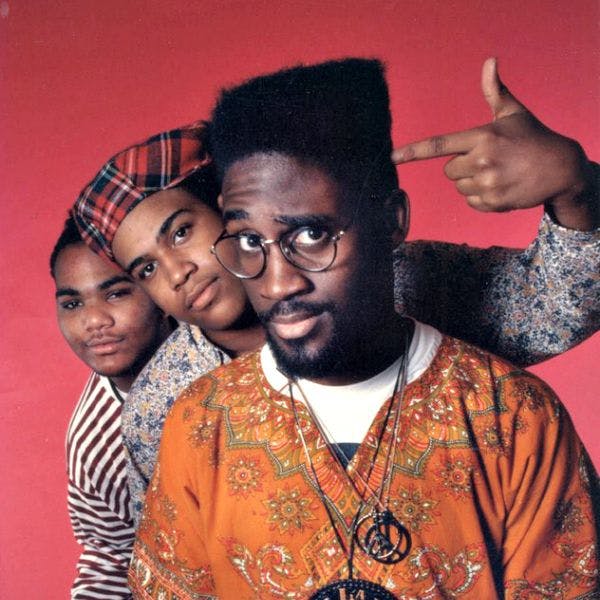
“3 Feet High and Rising was the first baby, and it gave birth to so many other things,” Maseo told Billboard in 2019, on the occasion of the album's 30th anniversary. “I’m very appreciative and thankful for that — the ups and downs. I’m truly thankful for the opportunity, especially when you think back at those times and how life was just going in general with your dream being this, and mind you for us it was platooning. It led up to 3 Feet High and Rising, and we were pretty content with that.”
"Rap gets stronger because of the people who are less known, like Shinehead and the Jungle Brothers, instead of M.C. Hammer or J.J. Fad," said Posdnuos in 1989 when critics were gushing over 3 Feet High.... "I have nothing against those acts, I know them personally and I love some of the things that they do; they get what they deserve. But it's the different styles that will build up rap, so it's good to have your Kid'n'Play who want to party, and it's good to have KRS-1 who are going to hit you with theory, and it's good to have Chuck D {of Public Enemy} trying to build up the race. It helps to expand rap out to all people, and that's what it should do."
